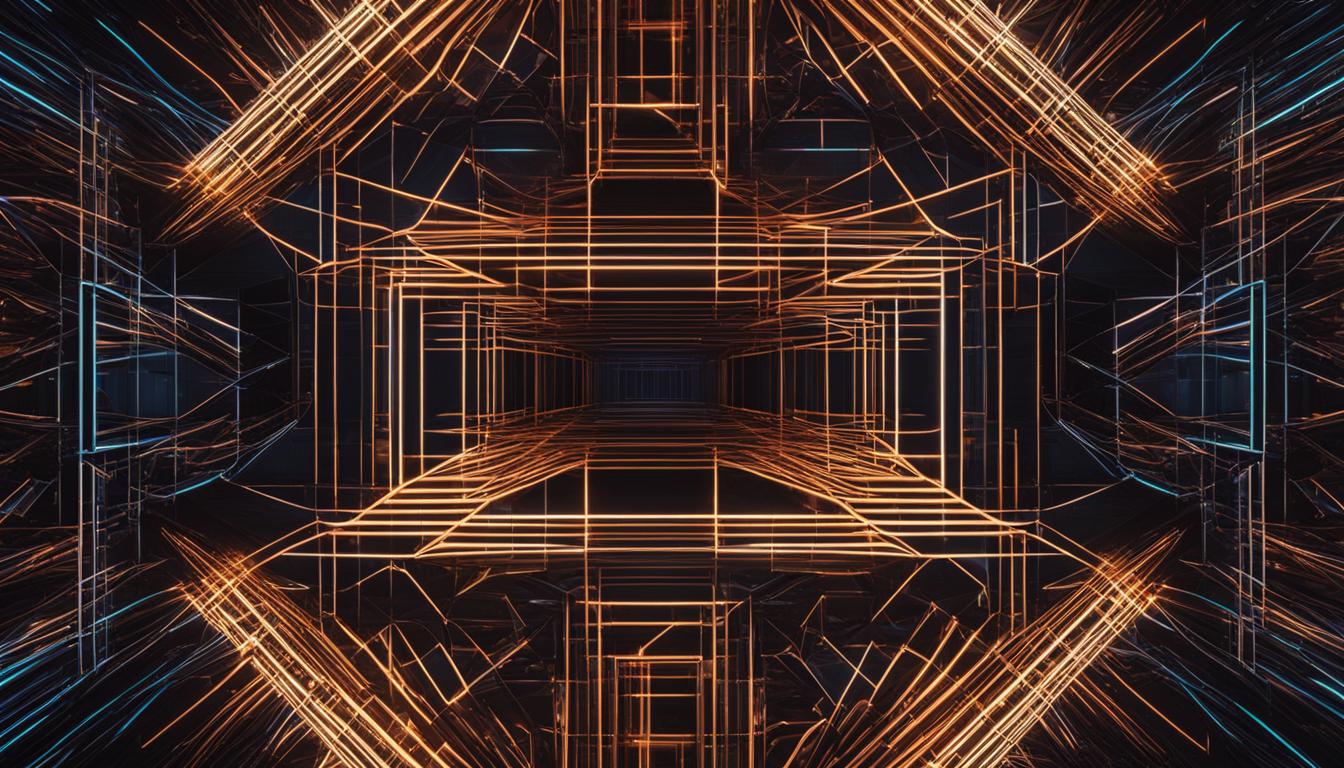Welcome to the world of AI-generated faces, where the possibilities are endless. With the advancement of artificial intelligence, generating synthetic faces has become a reality. Through advanced computational methods, machines can now create lifelike and captivating faces that can be used for a wide range of applications.
In this section, we will provide an overview of the process of creating AI faces. We will explore the techniques, algorithms, and ethical considerations associated with this technology. Join us as we delve deeper into the fascinating realm of AI-generated faces.
Key Takeaways:
- Creating AI faces is possible with the help of advanced computational techniques.
- AI can generate highly realistic and captivating synthetic faces.
- There are ethical considerations surrounding the use of AI-generated faces.
- AI face generation has practical applications in various industries.
- AI-generated faces have the potential to transform the digital landscape.
Understanding AI Face Generation
Creating synthetic human faces using artificial intelligence (AI) involves advanced computational methods that analyze and recreate the likeness of a human face. The process of generating synthetic faces using AI algorithms requires more than just coding. Understanding the intricacies of AI face generation is vital to achieving realistic, lifelike results.
Face Generation Using AI
The use of artificial intelligence in generating human faces has come a long way since its inception. Initially, AI-generated faces can be easily distinguished from real human faces. Still, with advancements in machine learning and deep neural networks, AI-generated faces have become much more realistic and difficult to spot.
The techniques and algorithms involved in face generation using AI usually rely on a vast amount of data, such as images of real people’s faces, to train the AI software. The software then uses this data to generate new synthetic faces that are visually similar to the real human faces in the training data.
AI Face Generation Techniques
Several AI face generation techniques are used to create realistic and captivating faces. These techniques include Generative Adversarial Networks (GANs), Variational Autoencoders (VAEs), and Deep Convolutional Neural Networks (DCGANs).
GANs, for instance, are a type of AI algorithm used to generate synthetic data. They work by pitting two AI systems against each other in a generative process. One AI system tries to create synthetic faces that are similar to human faces, while the other system tries to distinguish the synthetic faces from real human faces.
VAEs, on the other hand, are a type of AI algorithm used to learn a compressed version of a dataset. They are capable of generating new examples that match the learned dataset’s statistics. DCGANs, which are a variation of the GAN algorithm, are primarily used for generating high-quality synthetic images.
Overall, AI face generation techniques rely heavily on computational methods that analyze and recreate human faces’ likeness to simulate them in a visually realistic manner.
Exploring AI-Generated Avatar Faces
If you’ve ever played a video game or used a virtual reality simulator, you may have encountered an avatar – a representation of a person or character used to interact with a digital environment. With the advancements in AI face generation, these avatars can now be customized and personalized to an unprecedented degree.
By utilizing machine learning algorithms, AI-generated avatar faces can be crafted to match specific facial features, skin tones, and even emotions. This technology has opened up a whole new realm of possibilities for creating lifelike and engaging digital experiences.
One of the key benefits of AI-generated avatar faces is their ability to be easily customized for different purposes. They can be used in video games to create realistic non-playable characters (NPCs), or in virtual reality to create immersive and engaging environments. They can also be used in advertising, allowing companies to create relatable and appealing characters to sell products or services.
Perhaps one of the most exciting applications of AI-generated avatar faces is in law enforcement. By creating lifelike representations of suspects or wanted individuals, police departments can more easily track down and apprehend criminals. However, this also raises important ethical considerations, as the use of AI-generated faces in law enforcement may lead to false identifications and potential privacy violations.
The Advantages of Generating Synthetic Faces with AI
The ability to generate synthetic faces with AI has revolutionized the way we create and interact with digital media. With AI-generated avatar faces, we have access to a wide range of customizable and personalized characters, opening up new possibilities for gaming, virtual reality, and digital interactions.
As AI algorithms continue to evolve, we can expect even more advanced and realistic face generation techniques to emerge. This technology has the potential to reshape the digital landscape, creating new opportunities for creativity and innovation.
Generating Realistic AI Faces
If you’re looking to create realistic AI faces, there are several techniques that you can use. One popular method involves using machine learning and deep neural networks to analyze thousands of real-life photos, learning key facial features that can be used to generate highly accurate synthetic images.
Another approach involves using generative adversarial networks (GANs), which consist of two neural networks working together to create more realistic images. One network generates the images, while the other evaluates them for accuracy, providing feedback that helps refine the process and create even more realistic results with each iteration.
Comparing Machine Learning and GANs for AI Face Generation
| Technique | Advantages | Disadvantages |
|---|---|---|
| Machine Learning |
|
|
| GANs |
|
|
Both techniques have their own strengths and weaknesses, so it’s important to choose the approach that best suits your needs and goals. With the right tools and resources, AI face generation can create incredibly realistic and convincing synthetic images that can be used in a wide range of applications.
The Ethical Considerations of AI Face Generation
As with any emerging technology, AI face generation raises significant ethical considerations that must be addressed. The ability to generate realistic AI faces with ease has given rise to concerns regarding privacy and identity theft.
One of the primary ethical dilemmas is the potential misuse of AI-generated faces. These images could be used to create false identities, spread fake news, or even deceive individuals in online interactions. As AI becomes more advanced, the risk of creating images that are nearly indistinguishable from real individuals increases, making the threat of misuse even greater.
Additionally, there is a concern that AI-generated faces could be used for unethical purposes by law enforcement agencies, such as facial recognition software that could be used to target specific groups of people. This highlights the need for clear ethical guidelines and regulations on the use of AI-generated faces.
Another area of ethical consideration is the potential impact on individuals who unwittingly become the subjects of AI-generated faces. There is a risk that these individuals could be exploited or manipulated, and their rights to privacy and autonomy could be compromised.
Addressing Ethical Concerns
It is essential that developers and policymakers work together to address these ethical concerns and ensure that AI-generated faces are used in a responsible and ethical manner. This requires an ongoing dialogue on the development of guidelines and regulations that protect individuals’ rights while still allowing for the advancement and innovation of AI technology.
As AI face generation continues to evolve, it is crucial that we remain vigilant in our consideration of ethical issues and work to develop responsible and transparent practices that prioritize the well-being of all individuals.
Applications of AI Face Generation
The applications of AI-generated faces are vast and diverse, ranging from entertainment to law enforcement. Here are some examples of how this technology is being used:
Entertainment
AI-generated faces can create lifelike characters for movies, TV shows, and video games. This technology allows for cost-effective and efficient production of new content, propelling the entertainment industry forward. It also opens up the possibility for unique and personalized experiences for each user, as AI can create unique characters tailored to individual preferences.
Advertising
By generating AI faces, businesses can create more relatable and diverse marketing campaigns. This allows ads to connect with customers on a more personal level, resulting in a stronger emotional impact, and potentially higher engagement rates. Additionally, AI-generated faces can also save time and money, as businesses can avoid the costs of hiring models, actors, and photographers.
Fashion
AI-generated faces can be used in the fashion industry, from designing clothes to creating virtual models. This technology offers a way to create endless variations of virtual models, perfect for showcasing designs and experimenting with different looks. The use of AI-generated faces also allows for greater inclusivity and diversity in the fashion industry, as AI can create models of all shapes, sizes, and races.
Law Enforcement
AI-generated faces can be used to assist law enforcement with facial recognition technology. By generating a large database of AI faces, law enforcement can more easily identify suspects and track down criminals. This technology can also help locate missing persons, identify victims of human trafficking, and provide valuable evidence in criminal investigations.
As AI-generated faces continue to develop and evolve, it’s clear that the possibilities are endless. From creating unique characters in movies and games to assisting with law enforcement, AI-generated faces are already having a significant impact on many industries. As this technology becomes even more advanced, we can expect to see even more applications emerge.
Conclusion
As we have explored in this article, AI face generation is an exciting and rapidly advancing technology that has the potential to transform various industries.
Summarizing the Key Points
We began by introducing the process of generating AI faces and the techniques involved, followed by a deeper look into the algorithms used and the fascinating world of AI-generated avatar faces. We then explored the advancements that have enabled AI to create highly realistic faces and the ethical considerations surrounding this technology. Finally, we discussed the practical applications of AI-generated faces in various industries.
Embracing the Future of AI Face Generation
As we look ahead, it is clear that AI face generation will continue to evolve and become an integral part of our digital landscape. While there may be concerns and challenges along the way, it is important to embrace the potential of this cutting-edge technology and the opportunities it presents.
We hope this article has provided a comprehensive overview of AI face generation and the possibilities it holds. Thank you for reading!
FAQ
How can AI generate realistic faces?
AI generates realistic faces by analyzing and recreating human facial features using advanced computational methods, such as machine learning and deep neural networks. These algorithms learn from vast amounts of data to create lifelike and indistinguishable images of human faces.
What techniques are used in AI face generation?
AI face generation techniques include deep neural networks, generative adversarial networks (GANs), and variational autoencoders (VAEs). These algorithms enable AI to understand and replicate the intricate details of human faces, resulting in highly realistic synthetic images.
Can AI generate personalized avatars?
Yes, AI can generate personalized avatars by leveraging facial recognition technology and user input. These avatars can be customized to reflect an individual’s desired appearance, allowing for a unique digital representation.
What are some practical applications of AI-generated faces?
AI-generated faces have diverse applications across industries. They are used in entertainment for creating realistic characters in movies and video games, in advertising for generating lifelike models for campaigns, in fashion for virtual try-on experiences, and even in law enforcement for facial recognition and suspect identification.
What are the ethical considerations surrounding AI face generation?
Ethical considerations include concerns about privacy, identity theft, and the potential misuse of AI-generated faces. There is an ongoing debate about establishing guidelines and regulations to ensure responsible and ethical use of this technology.















FIND US ON SOCIALS